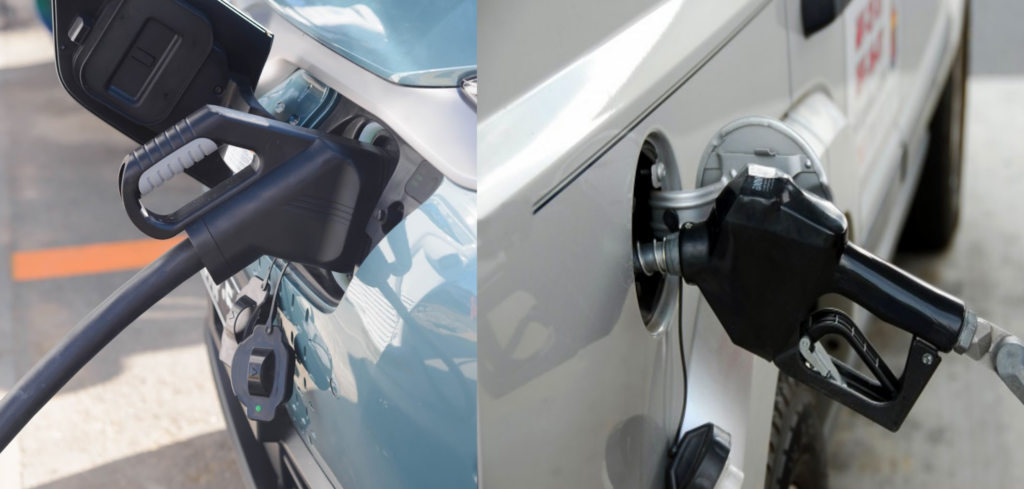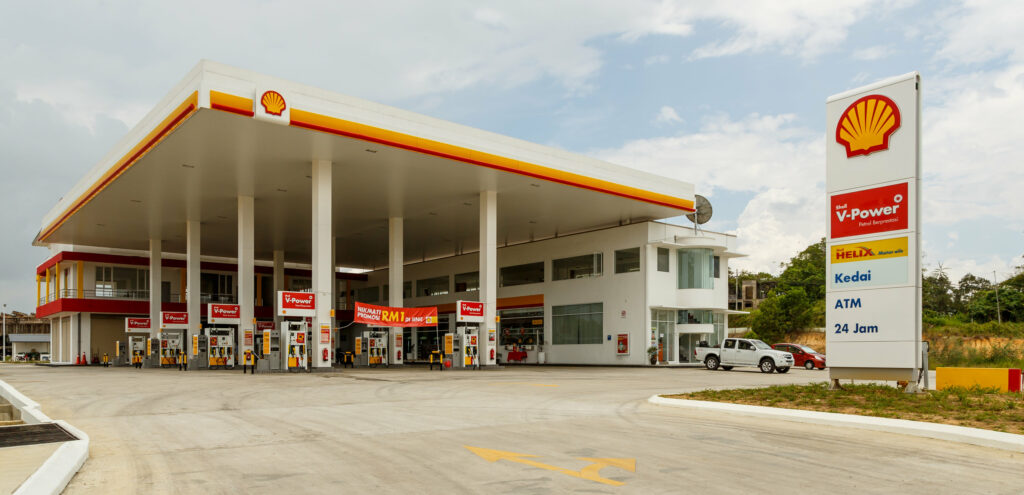
The modern service station is as hideous as it is ubiquitous. The big red lettering, the oily asphalt and the stink of petrol are an unfortunate necessity for combustion drivers worldwide, and Australians have been putting up with them practically since federation.
But it doesn’t have to be that way. By integrating EV charging with existing parking infrastructure we could do away with fuel stops entirely. A future without servos might not be so far away, so today we’re taking a look at what a post-petrol Australia might look like.
Taking a break
Any post-EV society is going to require us to rethink how we approach fuelling/charging our vehicles. Conventional service stations are designed for a 10 minute in-and-out experience. The pump lures you in, you buy a handful of snacks inside, and you’re on your way with a fuller tank and a lighter wallet.

Regardless of how much that model appeals to you, it doesn’t really work for plug-in electric vehicles. Even the fastest superchargers require at least 15 minutes to provide a reasonable amount of charge to an EV battery. A more realistic wait might be upwards of an hour, so planning around your charges can be a necessity for longer drives.
Yet while stop times will necessarily be longer, it’s important to remember you won’t be tied to an overpriced convenience store for the duration. Parking at a restaurant or shopping strip and leaving your EV to do its thing is entirely possible, cutting down time on other chores and eliminating the need for detours to find a station.
That’s if you need a charge at all. Daily commutes already fall well within the range of a single charge for most EV batteries, so once you’re in the habit of nightly charging you may never need to plug-in outside your home again. Even cross-country road-trips might not require as much planning as you’d think. JET Charge’s sister company – Chargefox – has already begun work on a network of superchargers for highways nationwide.
Servo withdrawal
In spite of their many flaws, it’s hard to deny that service stations hold a sentimental place in Aussie culture. Whether its a hidden love of chico rolls or a warm nostalgia for childhood road-trips, many of us have a soft spot for our favourite servo, and would be sad to see them go. So if combustion heads the way of the dinosaur, what will happen to them?
There’s a lot of space around the country dedicated to these stations. Even smaller 2-pump stops require relatively spacious sites, certainly larger than most retail businesses. This leaves a lot of spare room for development if combustion fuel becomes redundant.

Could these business endure if fuel ceases to be viable? It’s tough to tell. Urban convenience stores are always in demand, and highway locations could be converted from pumps to superchargers if they can also find a way to keep customers busy for the duration of their charge. Perhaps a shift from fast food to sit-down cafes & restaurants will become the norm for longer trips in years to come. Our waistlines would certainly be grateful.
The great unknowns
Any change of this scale will be met by inevitable resistance from petrol profiteers. Since EVs cost so much less to run than combustion, we can count on some seriously stubborn resistance to mass-adoption in Australia. The signs are already there; successful lobbying from oil & gas interests has kept Australia as one of the few developed countries without tax incentives for EVs. This is in spite of the very real benefits for the nation that come with their use.
At JET Charge, we think that it’s maths that will kill the servo more than anything else. They currently command 100% of the market for fuelling. If you need to fill your car, it’s almost inevitable that you will be doing so at a petrol station. This concentrates fuelling power into handful of oil giants, many of whom are among the largest companies in Australia today.
However, with EV Charging the majority of charging is done at home or at work, and only 10% is done in public. As a result, the market share for servos shrinks to that 10%. Can any market player survive an overall market contraction of 90%, and yet still operate the same as they always have? We don’t think so.
Nothing beats the convenience of charging overnight and having a full battery for tomorrow’s commute. The same can be said for public charging while you dine, shop, or relax. Abandoning service stations will require some getting used to for sure, but we can hardly wait.
But dreaming of a post-petrol world is more of a fun exercise than anything else, at least for now. We’re excited to see what’s next for charging and EV adoption, so let us know in the comments where you think Australia is going. Are the days of the servo numbered? What would you like to see replace them?

